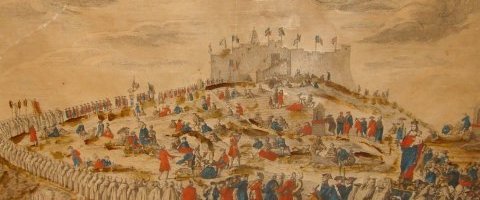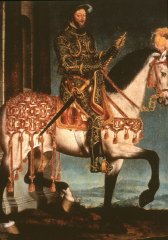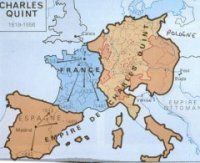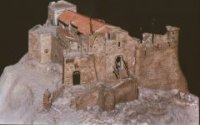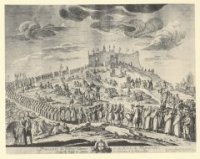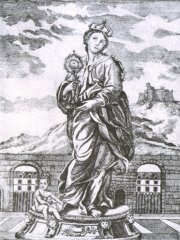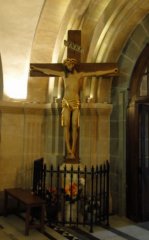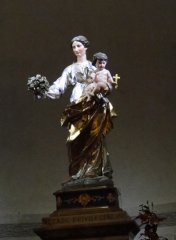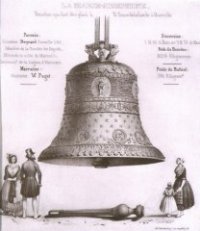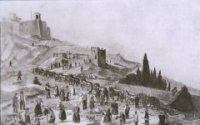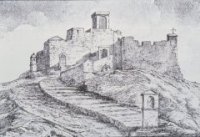He did not fail to go up to pay his devotions in the chapel of Notre-Dame de la Garde. Being interested, as a king, in matters of defence, he was sorry to observe that the town of Marseille was very badly defended. It was surrounded by a very poor wall, but possessed no fortress whereas many other French towns already had them. This, moreover, was easy to understand because Provence had become part of France only in 1481, that is to say only thirty five years earlier; and kings of France, who were always those to build fortresses, had not yet had the chance to build any in Marseilles. Francis 1st went back to Paris telling himself he must one day strengthen the town’s defences.
The opportunity to do so was very quickly provided as Charles 5th, Emperor of the Holy Roman Empire, was intending to take possession of the south of France in order to reunite the two parts of his Empire (Central Europe and Spain) He besieged Marseille in 1524 without managing to take the town. But Francis 1st then came to Provence and decided to build two fortresses in Marseilles: one on the island of If ( the famous Château d’If) and the other on top of the Garde Hill where the chapel was. So the latter is now enclosed within the fortress.
-

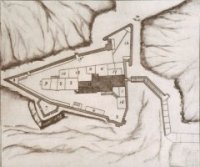
- En noir, la chapelle englobée dans le fort militaire de François 1er. En blanc, les pièces destinées au gouverneur et à la garnison.
This fortress took the name of « fort Notre-Dame de la Garde » Logically it should have been closed to the public, since chapels in castles were of course the exclusive reserve of the soldiers of the garrison. But Francis 1st decided that in peace time the faithful could have access to the chapel by crossing the drawbridge which the soldiers left lowered in the daytime - there is no other known example of a sanctuary inside an active fortress being left open to the public; and this situation lasted for more than four centuries, as you will see, the fortress was demilitatised only in 1934.
From the end of the 16th century many sailors were seen going up to Notre-Dame de la Garde. Up until then they used to go to pray before the statue of Our Lady of the Sea in the church of Saint Stephen situated at the spot where the the church of Notre-Dame du Mont is now situated.. But in 1588 that church was demolished and sailors assumed the habit of coming to Notre-Dame de la Garde to pray and depose their numerous ex-voto.
During the French Revolution, after the execution of Louis 16th on the 21st January 1793, members of the Bourbon family were incarcerated for six months in the fortress of Notre Dame de la Garde.
The Catholic cult was forbidden in France in November of the same year. The State seized all religious edifices. Everything the chapel contained then disappeared : the two statues of the virgin (one in wood dating from the 13th Century and the other in silver from 1651) … the bells, the altars the ex-voto..
After the Revolution, church services started again in Notre-Dame de la Garde in 1807.
Joseph-Elie Escaramagne, an ex-sailor, gave to the sanctuary a statue of the Virgin bought at an auction sale: it is the statue of the « Vierge au bouquet » (Virgin with the bunch of flowers) which one can see behind the altar in the Crypt. For his part, the Fort Commander offered a small bell to the chapel.
Since the 13th century, the population of Marseilles had greatly increased. The Chapel was clearly too small and those responsible for he sanctuary wanted to make it a bit bigger. But, since the time of Francis 1st, all the top of the hill was military property and these responsible officials of the Chapel were only its hirers. The owner was the French State and the Minister of War controlled the estate. So they wrote to him to ask if he would agree to rent them two small rooms that adjoined the sanctuary and which, until then, were used by the garrison. The Minister granted their request. The common wall was knocked down and the Chapel was extended.
-

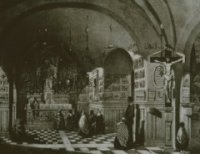
- La chapelle après l’agrandissement de 1834. A droite on voit les arcades pratiquées dans le mur lors de cet agrandissement.)
In 1837, the directors of the sanctuary installed in the Chapel, in place of the Virgin with the Bouquet, a statue of the Virgin in silver which they had commissioned from the artist Chanuel to replace the one which had been sent to be melted down during the revolution. This is the one which now dominates the great altar of the basilica.
A few years later, the little bell that the fort commander had offered in 1807 was considered by the church officials to be really too small. But, going from one extreme to the other, in 1842 they commissioned, from a foundry in Lyons, for this tiny chapel (at that time there was no question of building the bigger sanctuary that we now know) a huge bell of over 8 tons, which was installed above the chapel in 1845. There was certainly nowhere in the world such a small chapel possessing such a massive bell!

